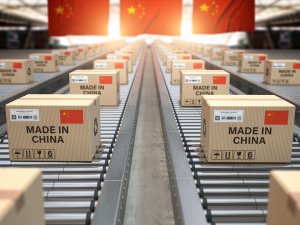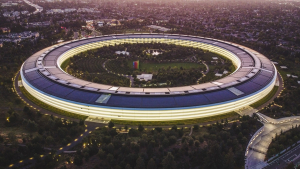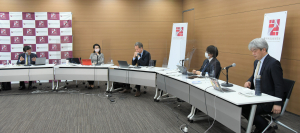
R-2021-097E
Since 2001, the Japanese government has pursued a patchwork of programs to nurture regional innovation hubs comparable to California’s Silicon Valley. Hiroaki Kuwajima’s review of Japan’s industrial cluster policy lays the groundwork for a closer comparative analysis between Japan and the United States.
* * *
This review is part of the Foundation’s research program Strategies for Technological Innovation and Economic Revitalization in the New Era of Global Competition. In conjunction with the sub-theme “reconfiguration of Japan’s markets and the investment environment,” this review sets out to evaluate the development of Japan’s industrial cluster policy between 2001 (under the cabinet of Prime Minister Jun’ichiro Koizumi) and 2021 (under Prime Minister Yoshihide Suga) in order to lay the groundwork for a comparative analysis of relevant policies in Japan and the United States.
This review focuses particularly on the paths in which the Japanese government pursued industrial agglomeration as a strategy for economic revitalization, which were affected by the changing macroeconomic environment and by the government response to those changes orchestrated by the Prime Minister’s Office.
Koizumi to Aso, 2001–9
The eight years spanning the cabinets of Jun’ichiro Koizumi (2001-6) through Taro Aso (2008–9) can be characterized as a period of trial and error, as the government set in motion an industrial cluster policy aimed at encouraging the agglomeration of specific industries in designated regions throughout Japan.
This first phase unfolded in the context of efforts by the ruling Liberal Democratic Party to revitalize Japan’s economy and society through structural reform. Prime Minister Koizumi was a particularly fervent reformer, arguing for “structural reform without exception’’ in advancing his political agenda for privatization, deregulation, and devolution. Among the specific reforms pursued by the Koizumi cabinet were local deregulation via the establishment of “special economic zones for structural reform,” the reconstitution of Japan’s national universities and research institutes as quasi-public “independent administrative institutions,’’ and an overhaul of the local allocation tax system. Japan’s industrial cluster policy emerged in the context of this campaign, with the Ministry of Education, Culture, Sports, Science, and Technology (MEXT) and the Ministry of Economy, Trade, and Industry (METI) as the two main policy actors.
The Second Science and Technology Basic Plan, released by MEXT in 2001, called for the formation of “knowledge clusters,” citing theoretical work on industrial clusters published by Michael Porter and other American economists beginning in the 1990s. In 2002, MEXT launched its Knowledge Cluster Initiative and its City Area Program for industry-academia-government collaboration. Meanwhile, METI instituted its own industrial agglomeration policy in 2001, with an Industrial Cluster Plan that envisioned the launch of some 20 separate consortium projects to “foster new businesses that build on regional strengths through reciprocal cooperation among companies, universities, research institutes, and local government entities.”
In 2007, the Diet enacted the Act on Formation and Development of Regional Industrial Clusters through Promotion of Establishment of New Business Facilities, etc, aimed at supporting the growth of industrial clusters to foster the autonomous development of regional economies. Under the law, each candidate region would formulate its own “basic plan” for industrial agglomeration in consultation with local business groups and submit the plan to the central government for revision and approval. Once approved, the plan would be eligible for support in the form of tax incentives to encourage capital investment and human resource development.
In summary, this was a period of trial and error for the government’s industrial cluster policy, as MEXT and METI launched their own programs under the banners of “knowledge clusters” and “industrial clusters.” This parallel approach generated the occasional success story. For example, in the city of Hamamatsu, MEXT’s Knowledge Cluster Initiative seeded the development of advanced medical imaging and surgical guidance technologies, while METI’s Industrial Cluster Plan helped nurture a local industry utilizing those technologies.[1]
However, in the majority of cases, government funding for each project was too modest to fuel sustained regional economic development.[2] A 2016 empirical study found that significant benefits for businesses participating in such consortia (as measured by growth in income and productivity) was limited to small and medium-sized firms.[3] Another study found very limited direct benefits for the participating companies themselves and negligible spillover effects for local manufacturing firms.[4]
The DPJ Government, 2009–12
In 2009, the Liberal Democratic Party, which had held power almost continuously since 1955, was toppled by the Democratic Party of Japan. In its election manifesto, the DPJ had pledged to address the bread-and-butter issues that occupied ordinary taxpayers while strengthening the policymaking powers of elected officials, as opposed to career bureaucrats. In keeping with the former pledge, the DPJ government introduced such policies as a child allowance, free high school education, and programs to assist job seekers. In connection with the second pledge, it moved to strengthen political control over budget allocations by establishing a Government Revitalization Unit charged with reviewing individual spending programs.
Another major emphasis during the DPJ government was the adoption of economic measures to aid recovery from the impact of the 2008–9 global financial crisis, which hit Japan’s manufacturing sector particularly hard. There were intensive policy debates in government circles of the need to diversify Japan’s industrial policy, focusing less on traditional manufacturing industries and more on growth industries, such as healthcare, robotics, and aerospace.[5]
These economic and political developments had a major impact on the direction of Japan’s industrial cluster policy. Under the DPJ government, MEXT’s Industrial Cluster Initiative and City Area Program were both scrapped, and direct subsidies under METI’s Industrial Cluster Plan came to a halt. On the other hand, significant progress was observed in terms of inter-ministerial cooperation under the political leadership of successive DPJ administrations.
For example, in 2011, after the Knowledge Cluster Initiative was reconstituted as the Regional Innovation Cluster Program in 2010, MEXT collaborated with METI, the Ministry of Agriculture, Forestry, and Fisheries (MAFF), and the Ministry of Internal Affairs and Communications (MIC) to draw up the Regional Innovation Strategy Support Program. In terms of its own industrial cluster policy, METI allocated new funding for “leading clusters” with the potential to become international centers of innovation, as distinguished from locally planned and funded projects for the revitalization of regional economies. Beginning in 2011, the DPJ government (as one of its “21 national strategic projects”) launched the “comprehensive special zone” system under the supervision of the Cabinet Office, offering comprehensive regulatory, tax, and fiscal support for the development of internationally competitive clusters.
The DPJ government deserves credit for coordinating the nation’s industrial cluster policy under centralized political leadership while emphasizing local autonomy in the regional revitalization programs. It also launched serious policy debate on medium- to long-term approaches to the diversification of growth industries in the nonmanufacturing sector. That said, the scale of government assistance remained quite small, and policy assessments were limited to the compilation of such easily quantifiable indicators as the number of new business initiatives and patent applications. There is little evidence that the programs succeeded in their fundamental purpose of revitalizing the economy through innovation.[6]
The Second Abe Administration up to 2016
The third phase in the development of Japan’s industrial cluster policy coincides with the first four years of Shinzo Abe’s second tenure as prime minister following the LDP’s return to power in 2012. Abe continued the top-down industrial cluster policy of his predecessors as part of the three-pronged growth policy popularly known as Abenomics. During this time, efforts at reconstruction from the 2011 Tohoku earthquake and tsunami topped the economic agenda, and the challenges of depopulation and demographic aging surged to the fore. In addition to implementing the 2011 Fourth Science and Technology Basic Plan, which prioritized reconstruction and revitalization of the disaster-hit areas, the government launched several new revitalization initiatives under the leadership of the Prime Minister’s Office. For example, the Japan Revitalization Strategy was released in 2013, while “national strategic special zones” and the Headquarters for Overcoming Population Decline and Vitalizing Local Economy in Japan were established the following year.
Early in the second Abe administration, indications of a policy shift vis-à-vis industrial clusters started to be observed. On the one hand, the first Japan Revitalization Strategy, adopted just a few months after Abe took office, proposed to “create new clusters centered on regional core firms and activate regional companies after redefining promising candidate areas for industrial clusters,” with the goal of creating “globally preeminent industrial clusters.”[7] However, the government subsequently rejected this focus on “core regional firms” as ineffective use of fiscal resources, placing more emphasis on support for startups. The key performance indicators adopted as part of the revitalization strategy also emphasized diversification of subsidies and other forms of government support.
There was further diversification of agency involvement, with the Cabinet Office, MAFF, the Japan Science and Technology Agency (JST), and the New Energy and Industrial Technology Development Organization (NEDO) all playing a role. In addition, the policy underwent a basic conceptual transformation, as the objective of “building industrial clusters” gave way to the more abstract goal of fostering “innovation networks” or “innovation ecosystems” among economic entities.[8] Despite a shift in economic policy accompanying the LDP’s comeback and the advent of Abenomics, there are elements of Abe’s industrial cluster policy, such as diversification of government actors, that can be seen as an extension of trends set in motion under the DPJ government.
A critique of this phase in policy development might focus on the need to improve the overall quality of the industrial clusters and collaborative frameworks that had sprung up here and there since the early 2000s;[9] the importance of achieving autonomous growth (independent financing and profitability); and the failure to conduct any rigorous quantitative cost-benefit analysis of programs implemented under the “industrial cluster” concept before replacing it with the “ecosystem” concept.
Abe to Kishida, 2016–21
After the cabinet reshuffle in 2016, government support intensified as each agency stepped up efforts to promote the development of world-class startups, inspired by the leaps in innovation powered by startups in Silicon Valley and elsewhere worldwide. MEXT launched its Program to Build Regional Innovation Ecosystems in 2016, targeting “core regional technologies” with the potential to spawn important new businesses that promised to contribute to the growth of the nation’s wealth. The Research Complex Program, instituted in 2015, sought to foster innovation by supporting R&D partnerships among industry, government, academia, and the financial sector. METI, meanwhile, floated several ambitious ecosystem proposals centered on digital transformation and “the fourth industrial revolution,” including the development of smart communities leveraging the power of artificial intelligence, Big Data, and the Internet of Things.
In 2019, the Integrated Innovation Strategy Council was established under the Cabinet Office with the participation of MEXT and METI. While building on existing regional revitalization programs, the council took a more targeted approach focusing on urban-centered ecosystems. In 2020, it selected several “startup cities” that will receive intensive, cross-ministerial support for the development of “startup ecosystems,” including deregulation and other measures to encourage relevant investment and entrepreneurship. Meanwhile, cross-ministerial participation and coordination expanded along with the scope of the “innovation ecosystems.”
When Prime Minister Yoshihide Suga took over from Abe in 2020, his cabinet introduced several new frameworks for spurring innovation and economic revitalization, including the new Digital Agency and the Green Growth Strategy, but the impact of the COVID-19 pandemic caused the Suga government to suspend full-scale implementation of programs to support the development of innovation ecosystems. Under the administration of Prime Minister Fumio Kishida, who replaced Suga in October 2021, the ecosystem concept has reemerged in the form of the new Digital Garden City initiative. However, as with the Industrial Cluster Plan, the government has failed to conduct the kind of quantitative assessments needed to evaluate the efficacy of policies implemented to date.
Conclusion
The foregoing is a brief overview of the Japanese government’s policies for the formation of industrial clusters as pursued between 2001 and 2021. The policies evolved in terms of both jurisdiction and scope in the context of a shifting macroeconomic environment, major natural disasters, and changes in the administrations of the Japanese government. Yet the basic framework for designating target regions and allocating fiscal resources has remained largely unchanged over the past 20 years. The government’s ability to flexibly adjust its policy agenda in response to changes in the external environment should be noted, but in the absence of any quantitative assessment of the efficacy of those programs, there is nothing to suggest that any of the plans have succeeded in fostering autonomous regional economic growth, attracting global businesses, or seeding the development of internationally competitive business clusters.
With these observations in mind, the research program on Strategies for Technological Innovation plans to conduct several comparative case studies of Japan and the United States with a view to identifying areas for improvement in Japan’s industrial cluster policy.
[1] Regional Economic and Industrial Policy Group, Ministry of Economy, Trade, and Industry, “Sangyo kurasuta keikaku dai niki chuki keikaku katsudo sokatsu” (Activity Report of the Second Term Medium-Range Industrial Cluster Plan), August 2011.
[2] See Takako Hoshi, “Chiiki sangyo shinko saku no genjo to kadai” (Measure to Promote Regional Industry: Status Quo and Challenges), JRI Review, vol. 7, no. 37 (June 2016), https://www.jri.co.jp/file/report/jrireview/pdf/8815.pdf, p. 9.
[3] Jun’ichi Nishimura and Hiroyuki Okamuro, “Knowledge and Rent Spillovers through Government-sponsored R&D Consortia,” Science and Public Policy, 43(2), April 2016, pp. 207─25, https://doi.org/10.1093/scipol/scv028.
[4] Hiroyuki Okamuro and Kenta Ikeuchi, “Chiteki kurasta seisaku ni yoru sangakukan renkei shien no koka” (Effects of the Knowledge Cluster Policy’s Support for Industry-Academia-Government Consortia), Kigyoka Kenkyu, no. 16 (2019), p. 38.
[5] See Ministry of Economy, Trade, and Industry, “Sangyo kozo bijon 2010 kosshi” (Industrial Structure Vision 2010, Outline), June 2010,https://warp.da.ndl.go.jp/collections/info:ndljp/pid/3486530/www.meti.go.jp/committee/summary/
0004660/vision2010gist.pdf.
[6] Takeo Hoshi and Tetsuji Okazaki, “Nihon-gata inobeshon seisaku no kensho” (An Assessment of Japanese-Style Innovation Policy), NIRA Opinion Papers, no. 19 (2016), pp. 5–7.
[7] https://www.kantei.go.jp/jp/singi/keizaisaisei/pdf/en_saikou_jpn_hon.pdf.
[8] See Makoto Fujita, “Chiiki inobeshon nettowaku no senryaku-teikei-ron-teki tenkai” (Regional Innovation Networks from the Standpoint of Strategic Partnership Theory), Waseda Shogaku, no. 454 (2019).
[9] See Ministry of Economy, Trade, and Industry, “Reiwa gannendo sangyo gijutsu chosa jigyo (Chiiki ni okeru opun inobeshon habu no katsuyo to hatten in kansuru chosa) hokokusho” (Report on the 2019 Industrial Technology Survey Project [Survey on Utilization and Development of Regional Open Innovation Hubs]), February 2020, https://www.meti.go.jp/meti_lib/report/2019FY/000352.pdf, p. 4.

















